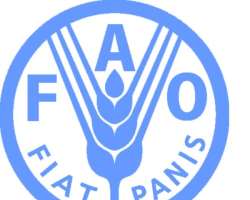Funds are running out in battle against Madagascar's locusts / Extra US $10.6 million urgently needed to avoid resurgence of locust plague

ROME, Italy, January 21, 2015/African Press Organization (APO)/ -- In Madagascar, the battle against an ongoing plague of locusts risks being lost as funds to continue operations to subdue widespread infestations of the crop-hungry insects run out, posing a serious food security challenge for 13 million people.
Failure to carry through the joint 2013-16 FAO/government anti-locust programme would annul the more than $28.8 million mobilized so far and could trigger a food-security crisis in a huge part of the country
Some $10.6 million is needed to complete the locust campaign, including monitoring and spraying operations going through the end of the rainy season in May 2015.
The locust plague that started spreading across Madagascar in 2012 was successfully halted last year but the risks of relapse are high during the rainy season, which provides ideal breeding conditions for the pests.
"Taking action now is critical to ensure the significant efforts made so far, financially and technically, are built upon rather than lost," said Dominique Burgeon, Director of FAO's Emergency and Rehabilitation Division.
"The current campaign is essential to reinforce the decline of the current plague, avoiding any relapse, and then continue towards a full-fledged locust recession," he added.
"The costs that will result from ceasing locust control activities will be far greater than the amount spent so far, so it is critical for the international community stay the course and complete the Locust Emergency Response Programme," said Patrice Takoukam Talla, FAO's Representative in Madagascar.
No time to waste to combat wingless hoppers
The first quarter of the year is especially critical as it corresponds to the second generation of breeding and to the formation of wingless "hopper" locust bands.
It is easier to combat hoppers, which are more sensitive to the pesticides and move more slowly than winged adults. As control operations have already been successfully carried out for one year, the hoppers are likely to form smaller groups, which however makes them harder to find and requires more ground and aerial surveys.
Biologically, even a short two-month interruption in monitoring and spraying operations could significantly erase much of the progress made so far.
Food production sharply down in southern regions
As much as 40 percent of crops in southern Madagascar are at risk from the locust crises in combination with the droughts and cyclones to which the island nation is prone, according to FAO.
More than three-fourths of the population in the Atsimo Andrefana and Androy regions, where maize and cassava production have declined sharply and rice output remains well below trend, currently face food insecurity, up notably from a year earlier.
Successful program
FAO, working with the government, designed a three-year $39.4 programme starting in 2013 that has already surveyed more than 30 million hectares - an area almost as large as Japan - and controlled locust infestations over more than 1.3 million hectares with pesticides and biopesticides, all without triggering any major impact on human health and the environment.
FAO's has also invested resources in training personnel so that Madagascar has national capacity to monitor and combat the insects
The resources raised so far in support of this effort have come from the governments of Austria, Belgium, France, Italy, Japan, Madagascar through a World Bank loan, Norway and the United States of America as well the European Union, the United Nations Central Emergency Response Fund and the International Fund for Agriculture Development. Algeria, Mauritania and Morocco also donated pesticides.
